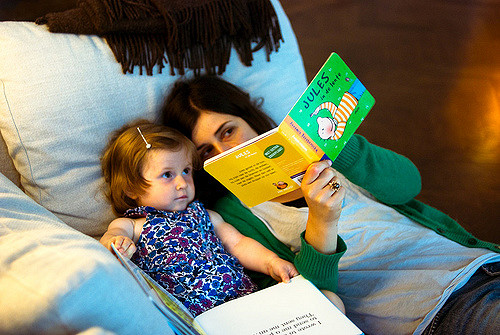Compound Verbs in Hindi: देना/Denaa (Part 1) Posted by Rachael on Mar 21, 2018 in Uncategorized
There are many compound verbs in Hindi but, to begin, we will explore compound verbs formed with the auxiliary verb देना/denaa (to give). This and others like it are the easiest compound verbs to master and thus a good starting point for those just beginning to learn about this concept.
Now, you may be wondering: what is a compound verb? Well, it might help to start with a few examples in English:
- As soon as she got home, she flopped/sat down on the couch, utterly exhausted.
- Grandpa insisted that he take off his hat at the dinner table.
- I have a hard time believing that things will work out on their own.
- He used to believe in you, but you let him down too many times.
- We tore up all of the evidence, but the police are still sniffing around the crime scene.
Here, you can see that, at least in English, a compound verb is typically made up of two or more words that, when combined in a compound verb, possess a different meaning that is not present in these words when they appear by themselves. For example:
In English, we often say “sit down” rather than “sit”––why do we add “down” to the equation here and how does it change the original meaning of “sit”? Adding “down” makes the phrase more colloquial (it is worth noting that compound verbs are far and away more prevalent in American rather than British English), and it also emphasizes the direction of the verb’s movement; of course, a downward movement is already implied in the verb “sit” but, by adding the word “down” you are further drawing attention to this downward movement. As for “flopped,” this word adds a much more dramatic meaning that emphasizes the fact that the subject was utterly exhausted and, instead of sitting down normally, “sprawled” onto the couch.
“Take off” becomes a totally different verb than just “take” (a verb) and “off” (a preposition) by themselves. “Take” (like its Hindi equivalent लेना/lenaa) is a rather bland verb that can be applied to many different situations. Additionally, it suggests a movement toward the subject who is “taking” something rather than a movement away (“he took the coffee,” “she takes the keys,” “we took the wheel,” etc.); adding “off” here complicates the sentence and adds a new meaning––the “toward-subject” movement of “take” is combined with the “away from-subject” movement of “off” to create the sense of removing an object and placing it at a distance from oneself.
As for “work out,” both of these words combined are more powerful in meaning than simply “work” or “out” by themselves. To say “work” by itself contains a suggestion of completing or performing a task or labor of some kind, yet it also possesses the meaning found in “it works,” as in, it functions correctly or is capable of performing the intended function. Adding “out” to the equation lends the sense that there are future consequences or results in store to the correct functioning of an object, person, etc. It seems to convey a longer term vision than simply “work” on its own, which is also conveyed by the future tense verb of the common phrase “it will work out.”
If you analyze the other English examples, they are similar in that they employ two words, often with a verb and a preposition or a verb and a phrase, to change the individual meanings of the words and convey a new and often richer meaning. Hindi has the same system for changing and conveying meaning, but it is a bit more complicated. Let’s start with देना/denaa (to give):
-
(मुझे) मेरा मनपसंद उपन्यास पढ़ दीजिए (Mujhe mera manpasand upanyaas parh dijiye/please read my favorite novel to me).
-
वह मेरा हर शब्द लिख देता है (Voh meraa har shabd likh detaa hai/He writes out my every word).
-
नौकरानी घर आकर रसोई में थैला रख देती है (Naukraani ghar aakar rasoi me thailaa rakh deti hai/The (female) servant comes to the house and sets the bag down in the kitchen).
-
हम गाड़ी बेच देते हैं (Hum gaari bech dete hain/We sell the car (to someone else).
-
(आप) बच्चों में किताबें बाँट दीजिए (Aap baccho me kitaabe baat dijiye/Distribute/pass out the books amongst the children).
As you can see, compound verbs in Hindi, like in English, are made up of two words but, in this case, one of those words is usually not a preposition (or, in Hindi, postpositions) or phrase but another verb. The first verb, which is abbreviated to its stem form (पढ़/parh (to read), लिख/likh (to write), रख/rakh (to keep or place), बेच/bech (to sell), बाँट/baat (to share or distribute), is combined with the full, conjugated form of the verb देना/denaa (also known as the auxiliary verb). In addition, using the verb “देना” adds the meaning that the verb’s action is directed away from the subject rather than toward him or her. Thus, when used in a compound verb, देना/denaa loses its original meaning of “to give” and takes on a different and sometimes subtle shade of meaning. Let’s review those examples in more depth:
- (मुझे) मेरा मनपसंद उपन्यास पढ़ दीजिए = Please read out my favorite novel to me. This verb emphasizes the fact that the reader is “reading out loud” to the indirect object (मैं) and thus the action of the verb is moving away from the person performing it, the reader, toward the indirect object. Another common way to say this is: (मुझे) उपन्यास सुना दीजिए where सुनाना/sunaanaa specifically means “to read out, recite or sing.”
- वह मेरा हर शब्द लिख देता है =He writes out my every word. Here the subject of the sentence (“He”) is performing dictation perhaps for the person requesting him to “write out” his/her every word. Thus, the action is traveling away from the person performing it (the writer) and is being “written out” on paper (as opposed to writing solely for oneself, an action that would involve movement or benefit toward the subject).
- नौकरानी घर आकर रसोई में थैला रख देती है=The female servant comes to the house and sets the bag down in the kitchen. Here, the action of the verb is clearly moving away from the subject, the servant, because she is placing or setting a bag down AWAY from herself, perhaps even in another room than the one she occupies or will occupy.
- हम गाड़ी बेच देते हैं =We sell the car (to someone else). Here, an emphasis is placed on the fact that the car is moving away from its original owners, into the possession of someone else, who is perhaps not related or connected to them. Again, the action of the verb “to sell” is moving away from the subjects performing the action.
- बच्चों में किताबें बाँट दीजिए =Distribute/pass out the books amongst the children. Here, the person performing the action (an unidentified and implicit “you,” who receives the command) is distributing the books away from his or herself to children. Clearly, the movement of the verb here is away from the subject performing the action.
Here are some other examples to help you master the use of this compound verb:
- मैं ख़त पढ़कर अपनी बहन को दे देती हूँ = I read the letter and give it to my sister (the letter is traveling away from the subject of the sentence, मैं, and toward her sister and the use of the compound verb emphasizes that).
- हमारी माँ हमें पूरी कहानी सुना देती हैं =Our mother relates/recites the whole story to us (the story, if you can think of it as a physical object, is traveling from the mother’s lips to the ears of her children).
- मैंने तुम्हारा सामान रेल गाड़ी में रख दिया =I put/placed your luggage in the railway car (the luggage travels AWAY from the subject, मैं, and onto the railway car).
*Lastly, it is important to note that compound verbs are not used with the progressive or -ing tense (मैं पढ़ रही हूँ), the conjunctive particle (मैं पढ़कर..), with negated verbs (मैं नहीं पढ़ती) and hypothetical and/or speculative statements (मैं पढ़ूँ) because they are concerned with the way or manner in which an action is completed and, if the action hasn’t happened yet or seems uncertain in any way, a compound verb is not the appropriate choice. Thus, in the examples we have used mostly commands (पढ़ो or पढ़िए), past tense verbs (मैंने पढ़ा) and simple present tense (मैं पढ़ता हूँ) that are not speculative and leave no doubt that the action of the verb is/was performed.

Build vocabulary, practice pronunciation, and more with Transparent Language Online. Available anytime, anywhere, on any device.






